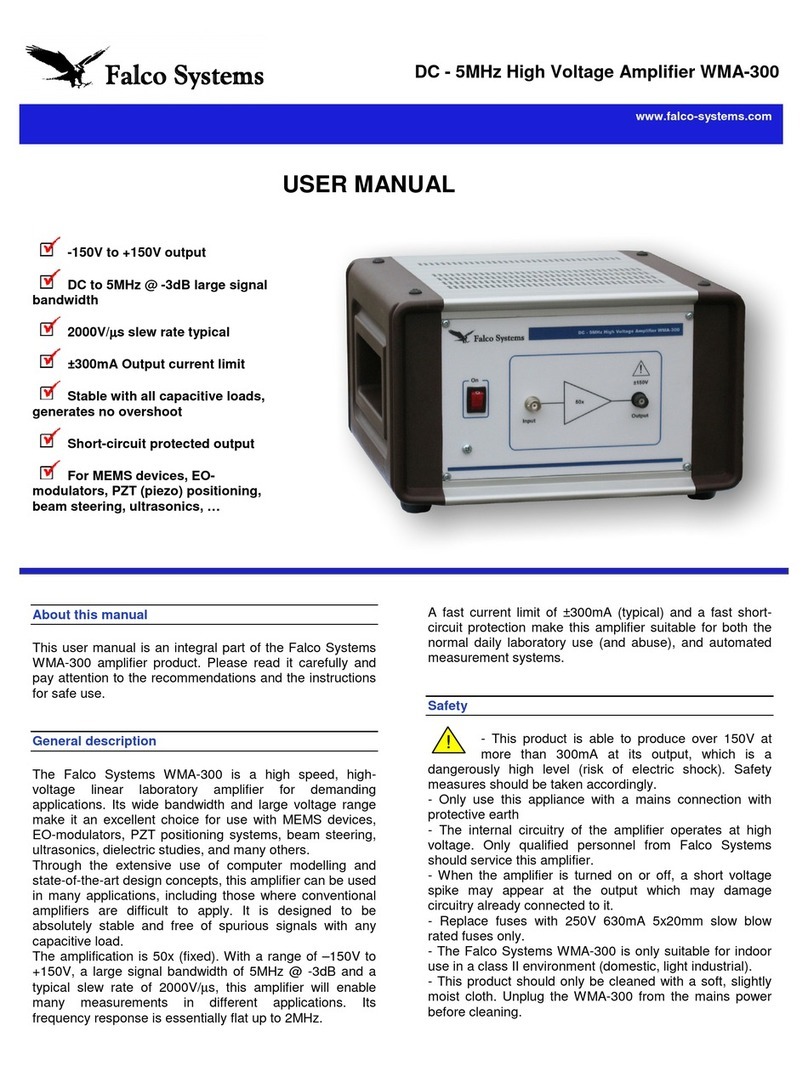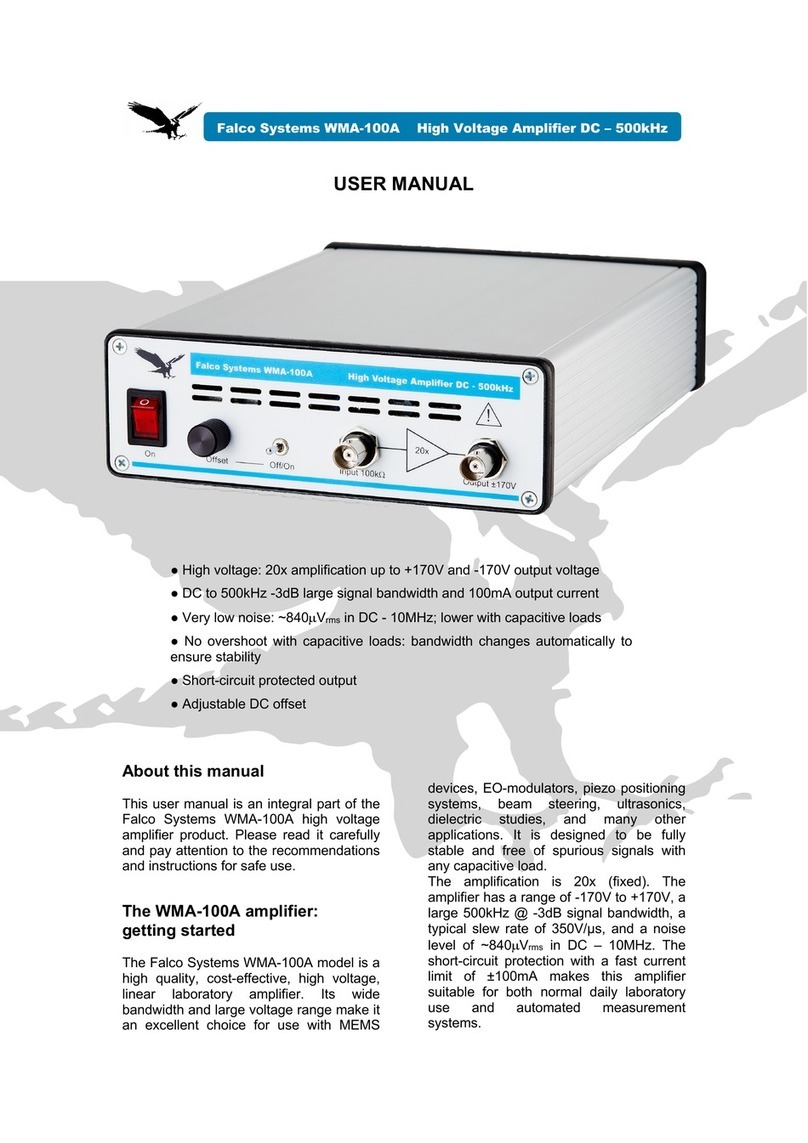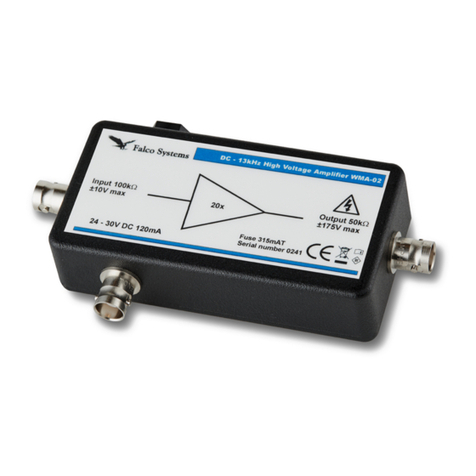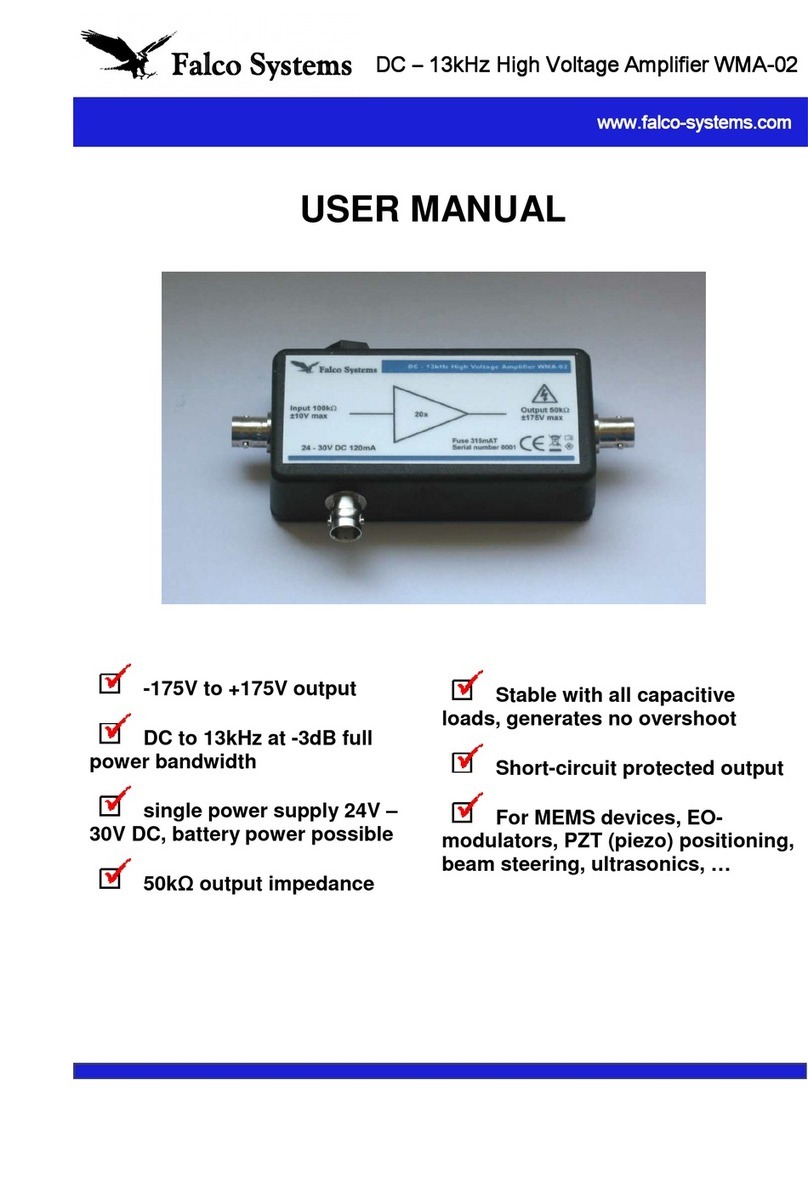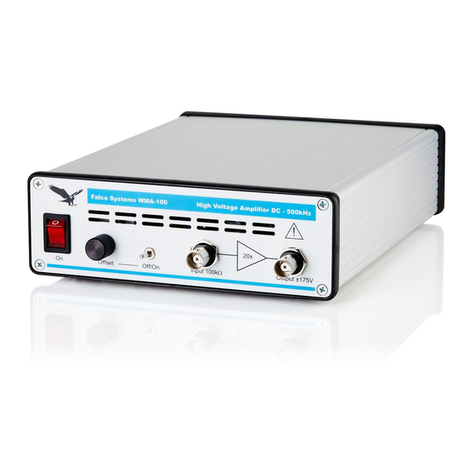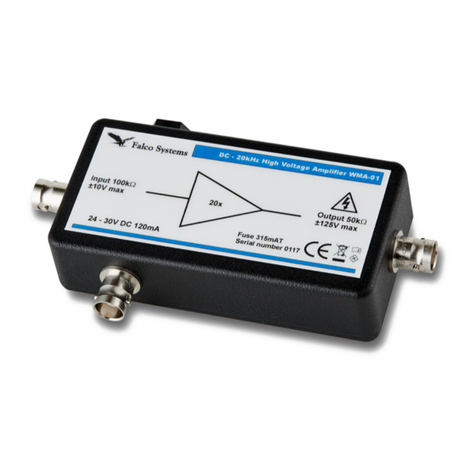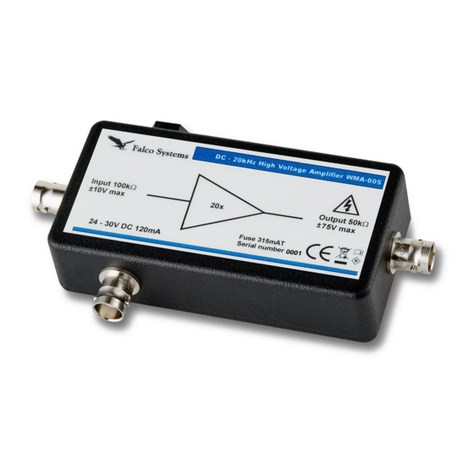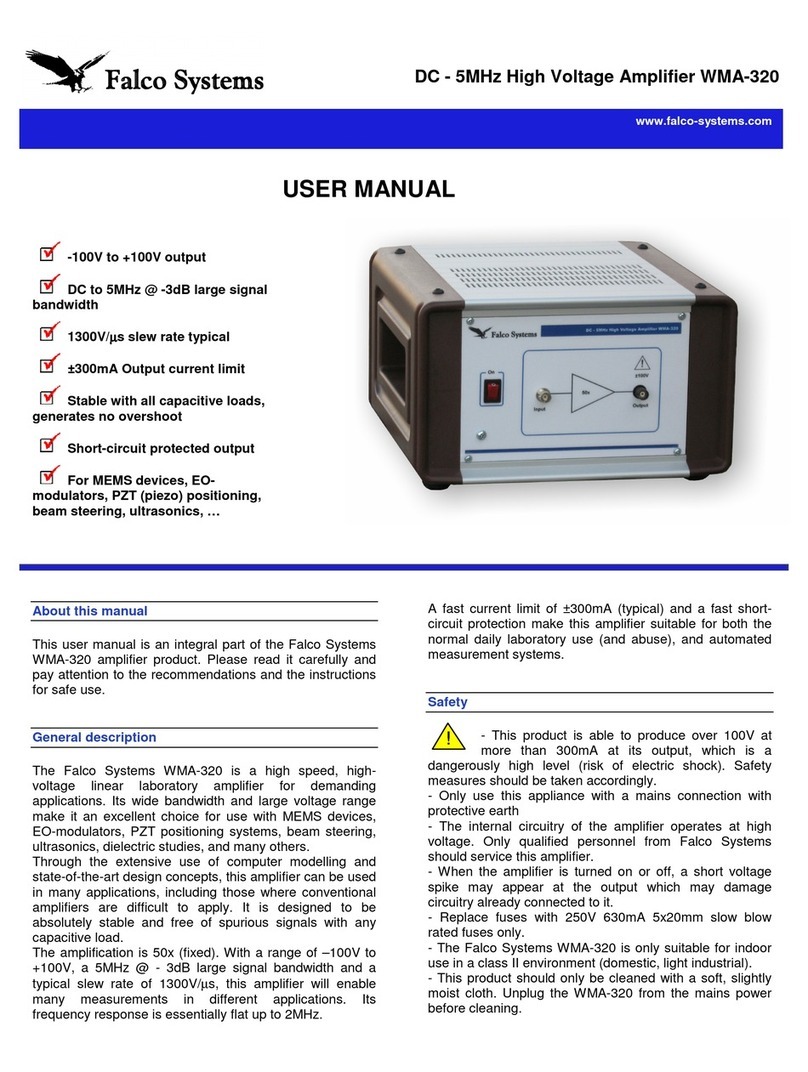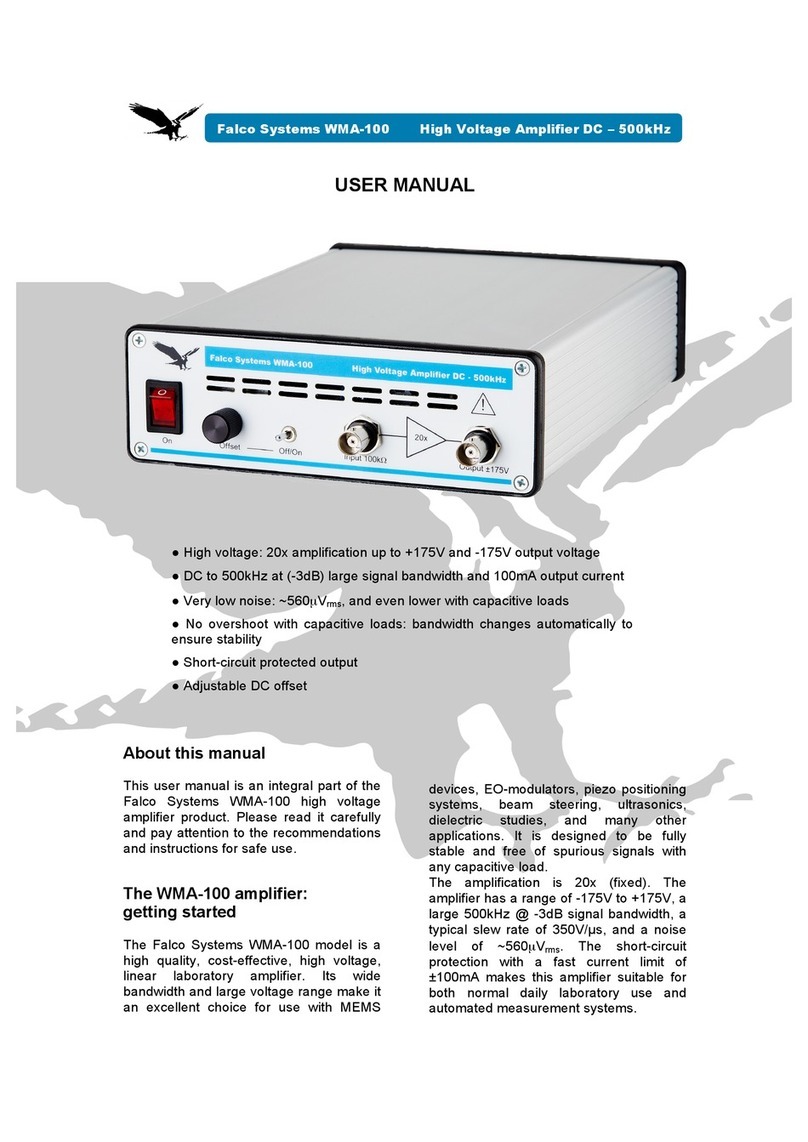
The inputs: connectors, noise and offset
The WMA-280 has been equipped with both a standard
BNC input connector and a differential Thomas & Betts
multi-pole connector. The latter is to be used when lowest
noise and interference performance is required (see
below). The amplifier comes with a spare contra-connector
for easy interfacing to other equipment. When using the
differential connector (with a differential signal), keep in
mind that the WMA-280 output ground and housing are
internally connected to the mains earth for safety.
Both inputs of the WMA-280 are grounded with 1kΩ, 0.1%
resistors, in parallel with 100pF to prevent ESD
(electrostatic discharge) input damage. These resistors
add some noise to the output voltage unless they are
bypassed by using a low-impedance source connected to
the inputs. With a finite-resistance source (e.g. 50Ω), the
input resistance also forms a resistive voltage divider,
which may influence the exact 20.0x amplification factor.
This deviation is well-known from the voltage divider
equation however, and can be easily compensated for in
the input signal if required. When the BNC connector is
used, the negative input of the differential input amplifier is
unused and sees the internal 1kΩas a small noise source.
The 1kΩresistors also add to the offset voltage because
the input offset current of the input amplifiers generates a
voltage over these resistors. This output offset voltage
may become as large as 3mV if both inputs are
unconnected. By using the differential inputs or grounding
the unused input on the differential connector when using
the BNC connector, the offset is reduced to less than 2mV.
Input protection
An ultra-low noise amplifier like the WMA-280 can never
be made fully insensitive to input overload conditions, as
this would limit the noise performance of the amplifier to
an unacceptably low level. Resistors in the input lines limit
the input current to a safe value as long as the input
voltage is not above ±15V.
For normal operation, input voltages should remain in the
–7.5V to +7.5V range, resulting with an amplification of
20x in an output voltage swing of –150V to +150V.
Above 15V (-15V) at the input, the amplifier may be
permanently damaged if the current of the source is not
limited.
Never apply more than +15V (-15V) to the amplifier input!
Output protection
The WMA-280 has been designed to be fully stable with all
capacitive loads. Instability under capacitive loading
conditions is a common problem of high-speed negative
feedback amplifiers on the market, often resulting in
unwanted overshoot voltages, and, in extreme cases,
oscillations (check the respective manuals and datasheets
for details). In the WMA-280, this problem has been solved
by a clever feedback system. Although overshoot may
occur at certain capacitive loads the amplifier will never
oscillate.
Overloading or short-circuiting this amplifier will not break
down the amplifier, due to the extremely fast current
limiting circuit that has been employed.
Although the amplifier cannot be damaged by a short-
circuit condition or capacitive loading, two situations
should be avoided:
-Connecting a charged capacitor
-Using high inductance values (coils)
The load
The output impedance of the WMA-280 is in the milliohms
range. The amplifier is generally used for high-impedance
applications where the load is mainly capacitive. This is
true for MEMS devices, EO-modulators and PZT's
(piezo’s) alike. Resistive loads can be used as well. The
amplifier behaves neatly with capacitances up to 10nF, but
may show significant offset voltages if the capacitive load
is higher and high frequency signals are amplified.
If output monitoring is required, it is recommended to
connect a 10x oscilloscope probe to the output. A special
BNC to probe tip connector is usually supplied with the
probe (Fig. 1). However, the user can choose a different
way of connecting the oscilloscope, as long as care is
taken with the high output voltage. Pieces of non-coaxial
cable in the connection can cause overshoot in the
oscilloscope reading.
The amplifier should not be used for telecommunication as
described in the R&TTE directive 95/5/EC.
Figure 1. The 10x probe connected for monitoring the
output signal

